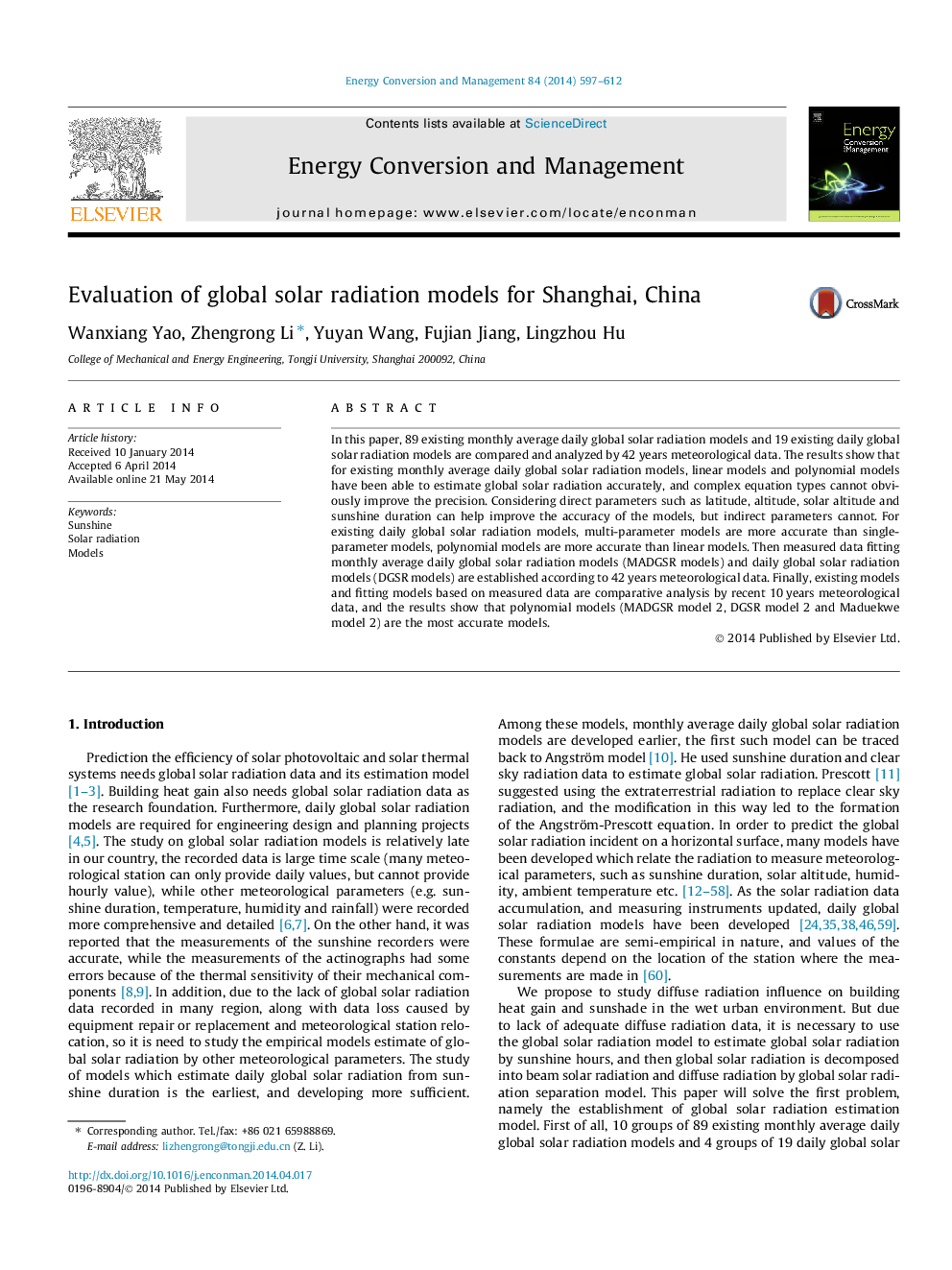| Article ID | Journal | Published Year | Pages | File Type |
|---|---|---|---|---|
| 763826 | Energy Conversion and Management | 2014 | 16 Pages |
•108 existing models are compared and analyzed by 42 years meteorological data.•Fitting models based on measured data are established according to 42 years data.•All models are compared by recently 10 years meteorological data.•The results show that polynomial models are the most accurate models.
In this paper, 89 existing monthly average daily global solar radiation models and 19 existing daily global solar radiation models are compared and analyzed by 42 years meteorological data. The results show that for existing monthly average daily global solar radiation models, linear models and polynomial models have been able to estimate global solar radiation accurately, and complex equation types cannot obviously improve the precision. Considering direct parameters such as latitude, altitude, solar altitude and sunshine duration can help improve the accuracy of the models, but indirect parameters cannot. For existing daily global solar radiation models, multi-parameter models are more accurate than single-parameter models, polynomial models are more accurate than linear models. Then measured data fitting monthly average daily global solar radiation models (MADGSR models) and daily global solar radiation models (DGSR models) are established according to 42 years meteorological data. Finally, existing models and fitting models based on measured data are comparative analysis by recent 10 years meteorological data, and the results show that polynomial models (MADGSR model 2, DGSR model 2 and Maduekwe model 2) are the most accurate models.
